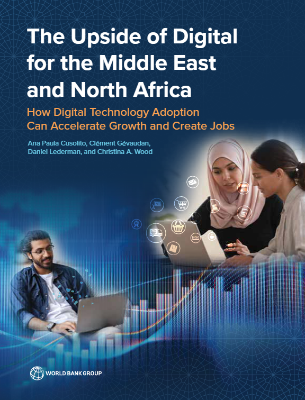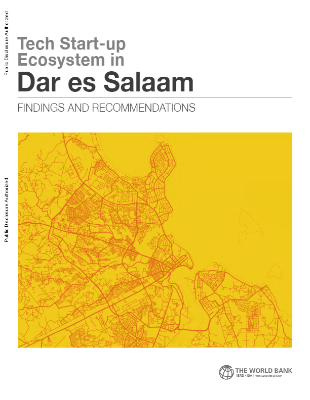The argument that digitalization helps to sustain economic activity has never been more obvious than during the crisis brought about by the global COVID- 19 pandemic. Of note, digital technologies are general-purpose technologies that are used across a wide variety of economic activities. Consequently, the gains from achieving universal coverage of digital services are likely to be large and widespread across the economy.
This report argues that the Middle East and North Africa region is suffering from a “digital paradox”: the region’s use of social media accounts is high relative to what would be expected given its level of gross domestic product (GDP) per capita—an indicator of economic development—yet its use of digital tools, such as the internet, to make payments is low.
The good news is that the socioeconomic upside of digitalizing the economy of countries in the Middle East and North Africa (and other low- and middle-income economies) is probably huge. GDP per capita could rise by more than 40 percent, manufacturing revenues per unit of factors of production could rise by 37 percent, employment in manufacturing could rise by 7 percent, and tourist arrivals could rise by 70 percent, creating jobs in the hospitality sector. Long-term unemployment rates could fall to negligible levels, and female labor force participation could double to more than 40 percent.
The main explanation for the upside is that digital technologies reduce informational costs that constrain economic transactions. The report provides three concrete examples of this mechanism at work. The first example describes how data from digital platforms provide information about the quality of ridehailing service providers, overcoming information asymmetries between drivers and riders and contributing to improved service quality over time. The second example describes the role of digital technologies, specifically, information and communication technologies (ICTs), in enabling firms in West Bank to overcome physical barriers to mobility. The third example highlights tourism service providers’ use of the internet to disseminate information, which has the effect of reducing the barriers to travel posed by distance, language differences, and absence of a common border between origin and destination countries, thereby increasing demand for tourism services.
A key question is how fast the Middle East and North Africa can approach universal coverage of digital infrastructure and how the deployment of digital infrastructure services should be targeted. A second key question is how the region can achieve the widespread adoption of digital payment tools. Achieving widespread adoption of digital payments will require efforts to increase digitalization among the underserved, to enhance the functioning of financial and telecom sectors, and to build societal trust in the government and in related institutions such as banks and financial services firms. Achieving these objectives will require appropriate policies and programs that are implemented well.











